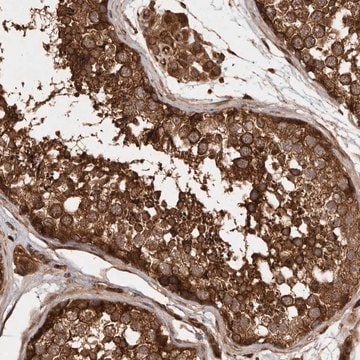T59803
Triethylene glycol dimethyl ether
ReagentPlus®, 99%
Synonyme(s) :
1,2-Bis(2-methoxyethoxy)ethane, Dimethyltriglycol, NSC 66400, Triglyme
About This Item
Produits recommandés
Densité de vapeur
>4.7 (vs air)
Niveau de qualité
Gamme de produits
ReagentPlus®
Pureté
99%
Forme
liquid
Température d'inflammation spontanée
375 °F
Limite d'explosivité
8 %
Indice de réfraction
n20/D 1.423 (lit.)
Point d'ébullition
216 °C (lit.)
Pf
−45 °C (lit.)
Densité
0.986 g/mL at 25 °C (lit.)
Chaîne SMILES
COCCOCCOCCOC
InChI
1S/C8H18O4/c1-9-3-5-11-7-8-12-6-4-10-2/h3-8H2,1-2H3
Clé InChI
YFNKIDBQEZZDLK-UHFFFAOYSA-N
Vous recherchez des produits similaires ? Visite Guide de comparaison des produits
Catégories apparentées
Description générale
Application
- Extracting solvent in a modified SA-HPSW (Supercritical Anti-Solvent with High-Pressure Solvent Wash) system.
- Solvent in the synthesis of passivated iron nanoparticles.
Informations légales
Mention d'avertissement
Danger
Mentions de danger
Conseils de prudence
Classification des risques
Eye Irrit. 2 - Repr. 1B
Risques supp
Code de la classe de stockage
6.1C - Combustible acute toxic Cat.3 / toxic compounds or compounds which causing chronic effects
Classe de danger pour l'eau (WGK)
WGK 1
Point d'éclair (°F)
235.4 °F - closed cup
Point d'éclair (°C)
113 °C - closed cup
Certificats d'analyse (COA)
Recherchez un Certificats d'analyse (COA) en saisissant le numéro de lot du produit. Les numéros de lot figurent sur l'étiquette du produit après les mots "Lot" ou "Batch".
Déjà en possession de ce produit ?
Retrouvez la documentation relative aux produits que vous avez récemment achetés dans la Bibliothèque de documents.
Les clients ont également consulté
Notre équipe de scientifiques dispose d'une expérience dans tous les secteurs de la recherche, notamment en sciences de la vie, science des matériaux, synthèse chimique, chromatographie, analyse et dans de nombreux autres domaines..
Contacter notre Service technique












